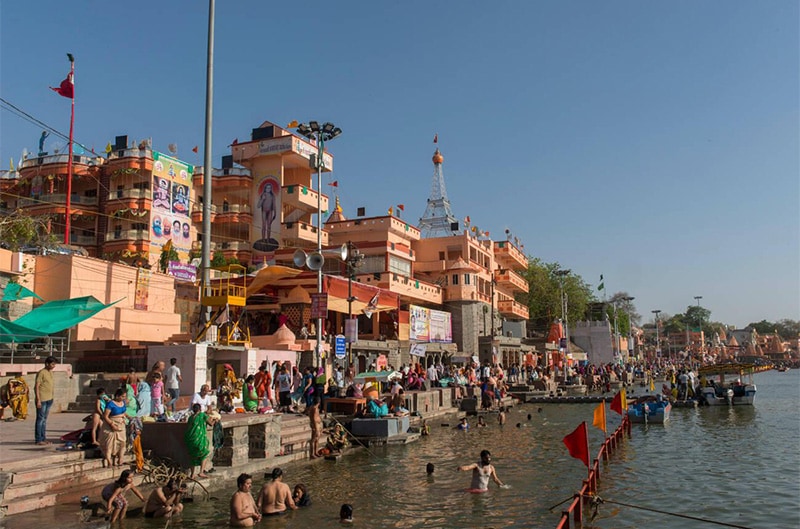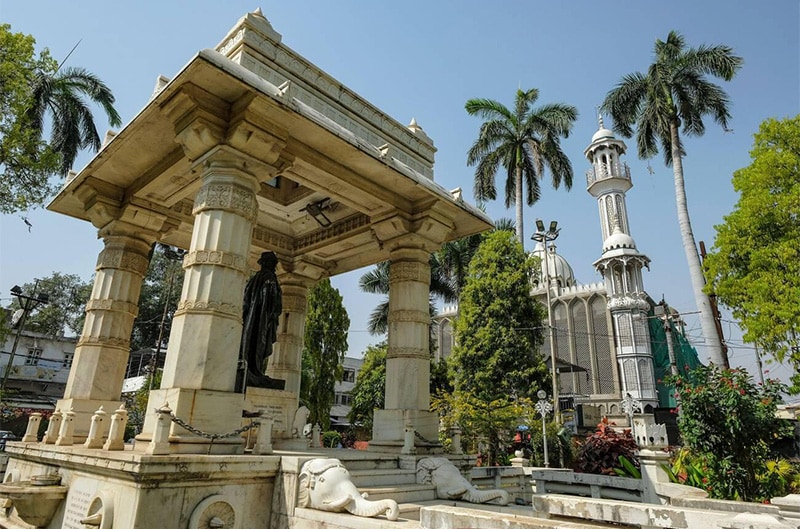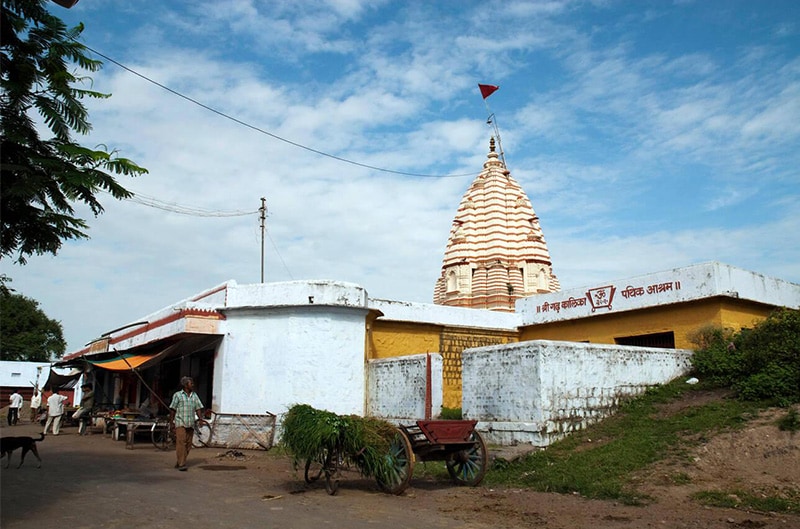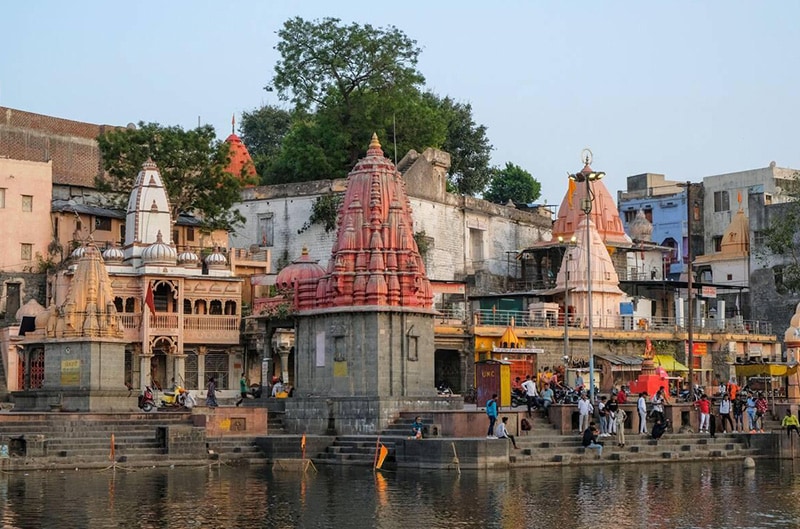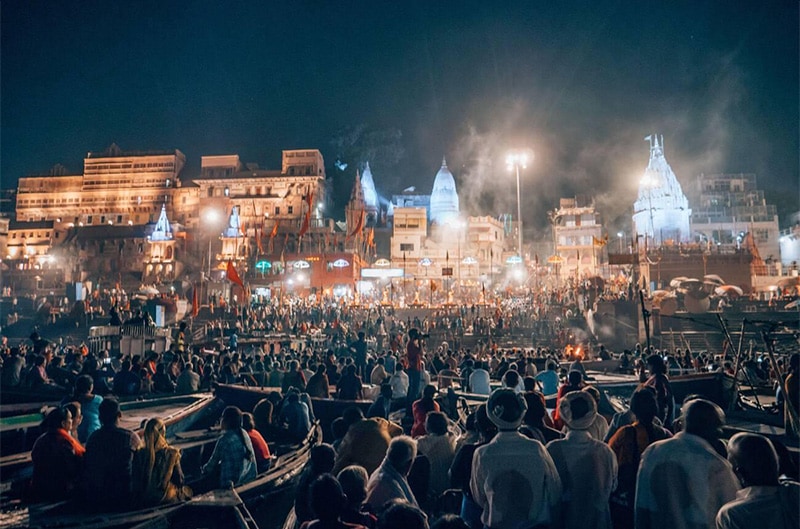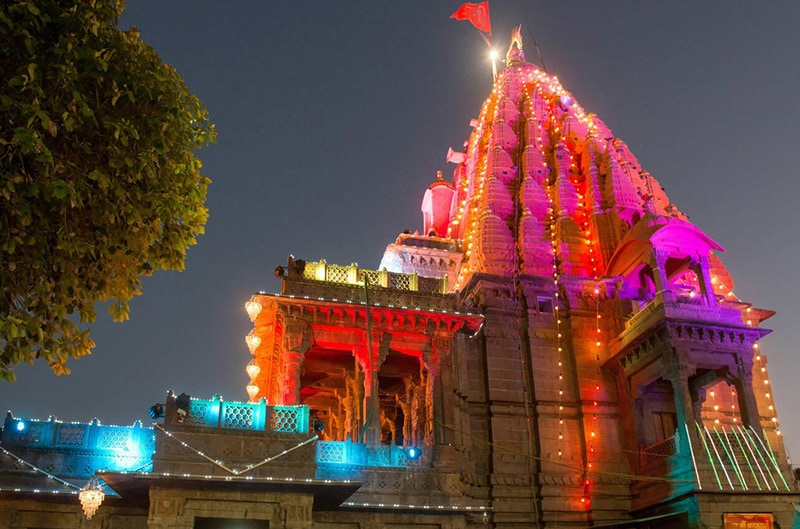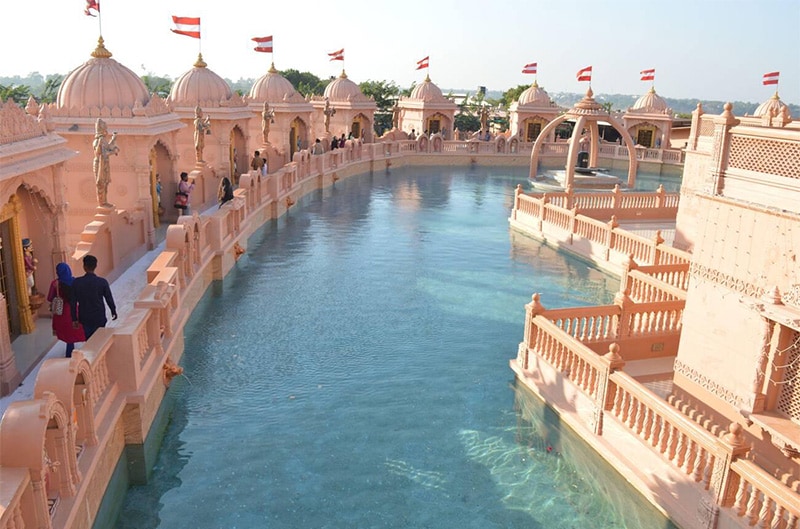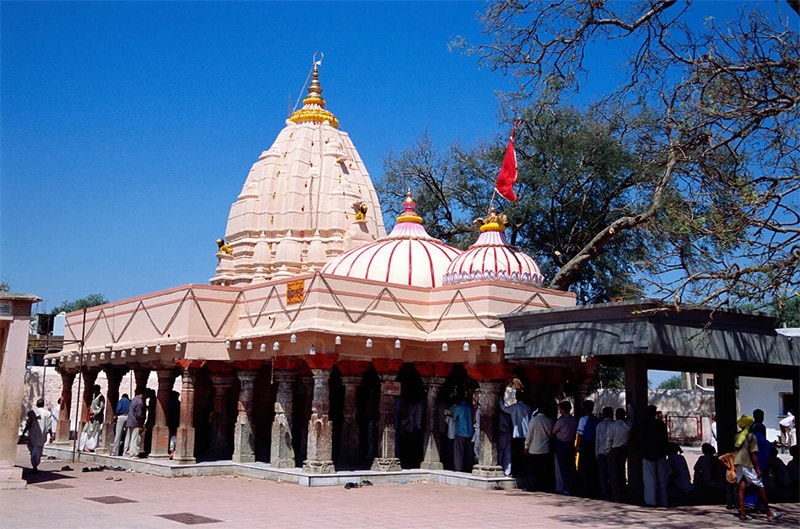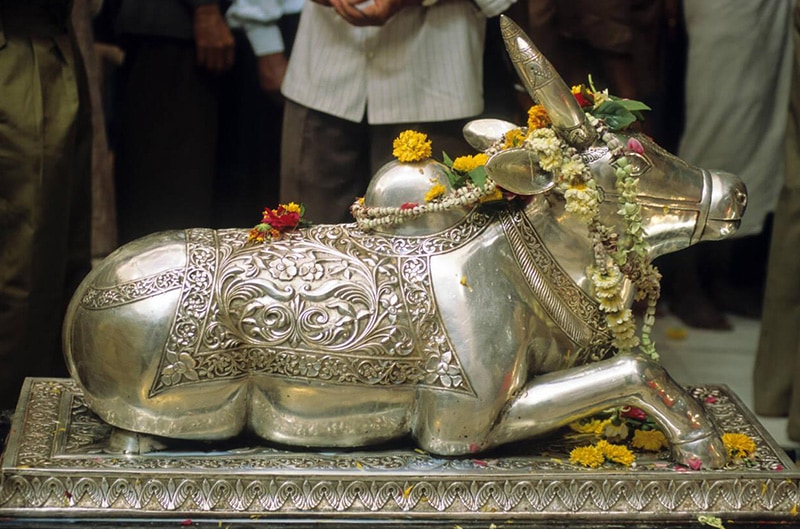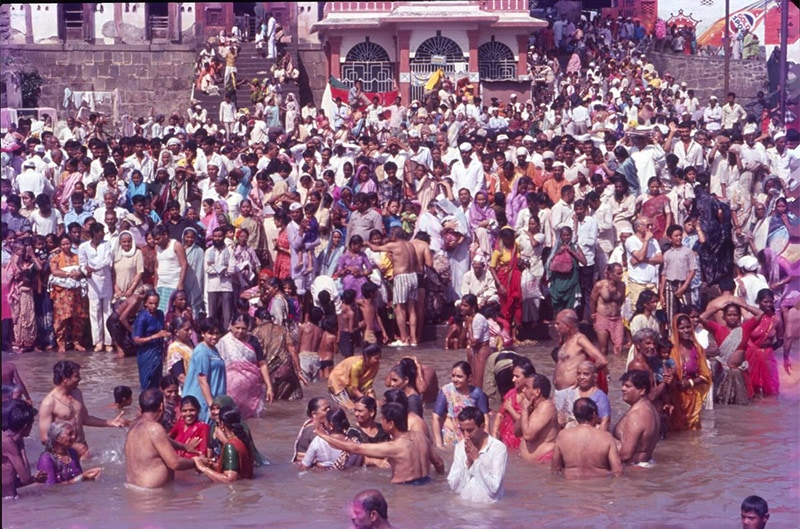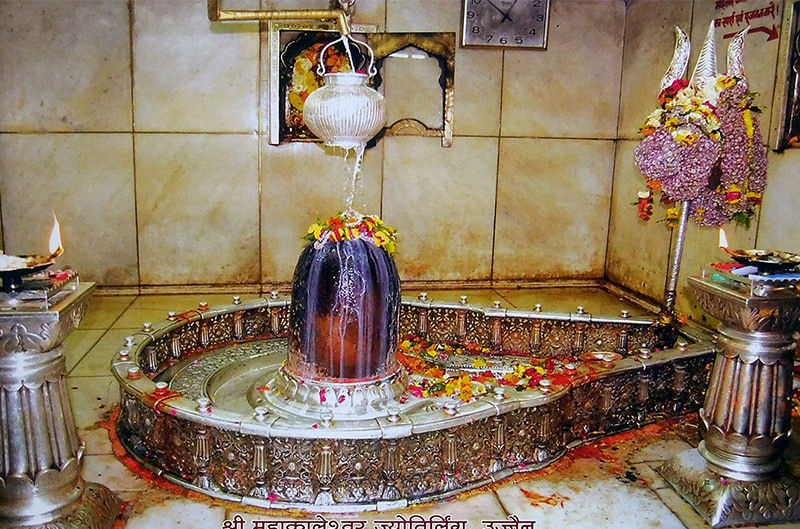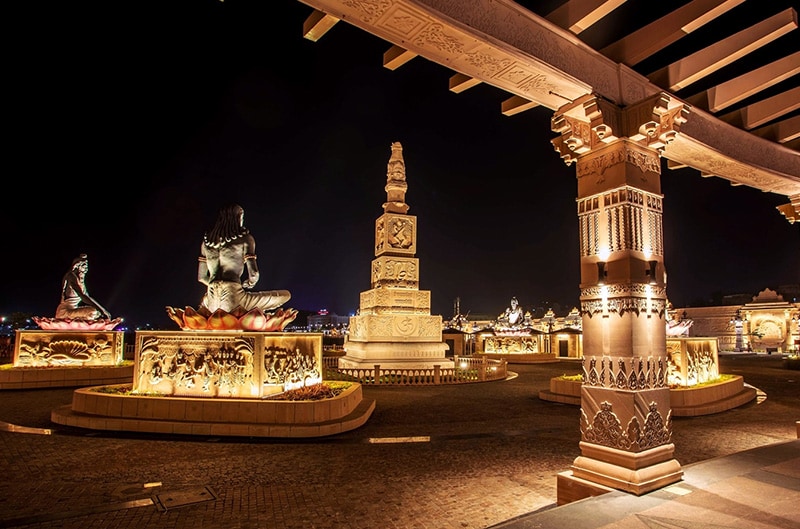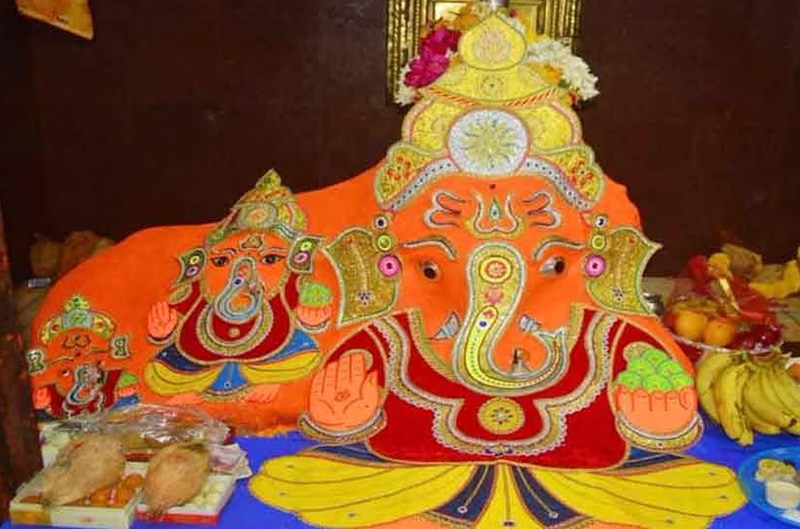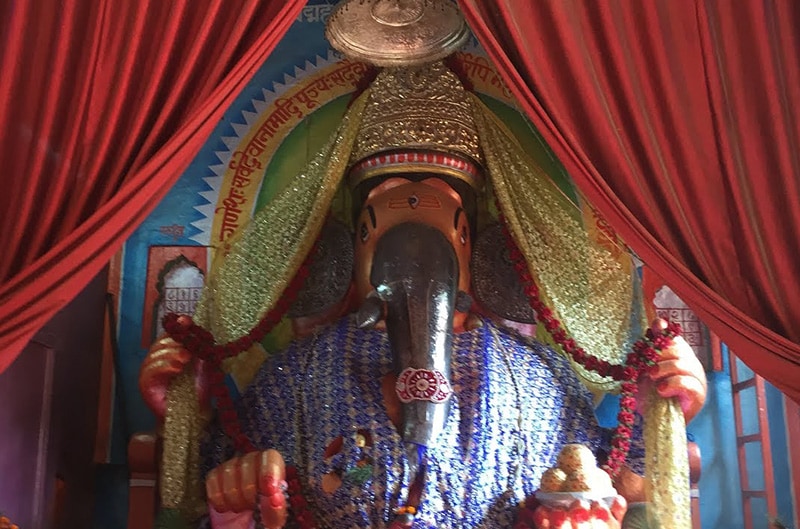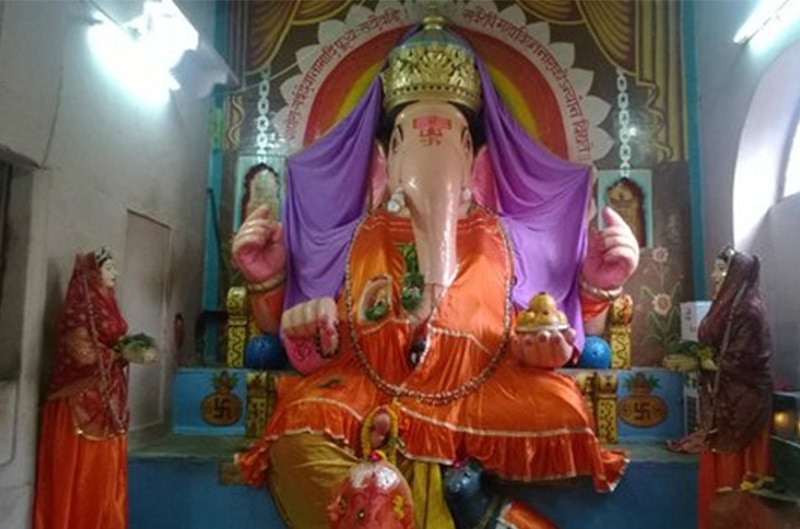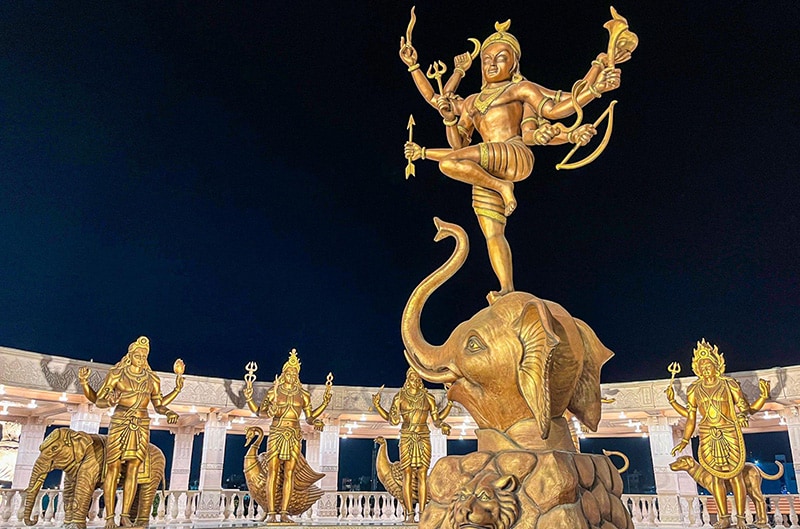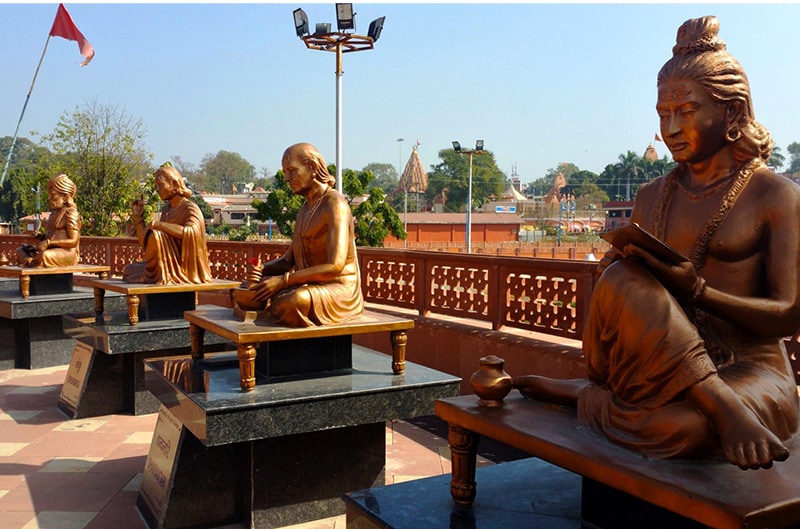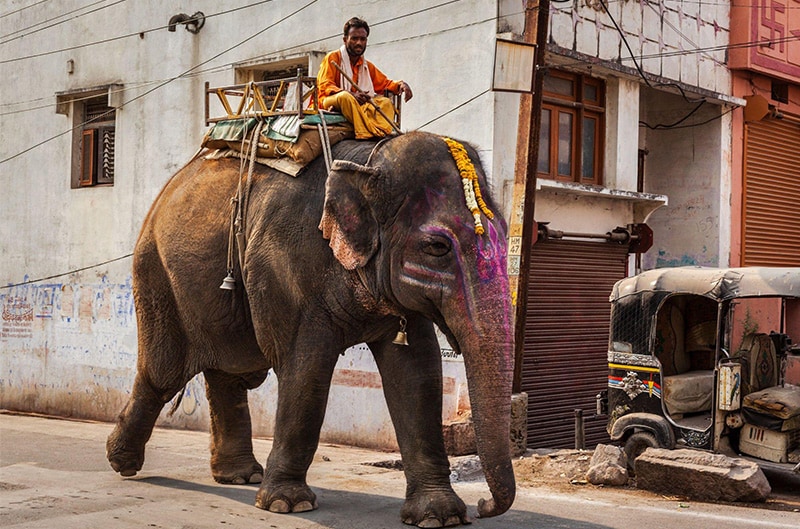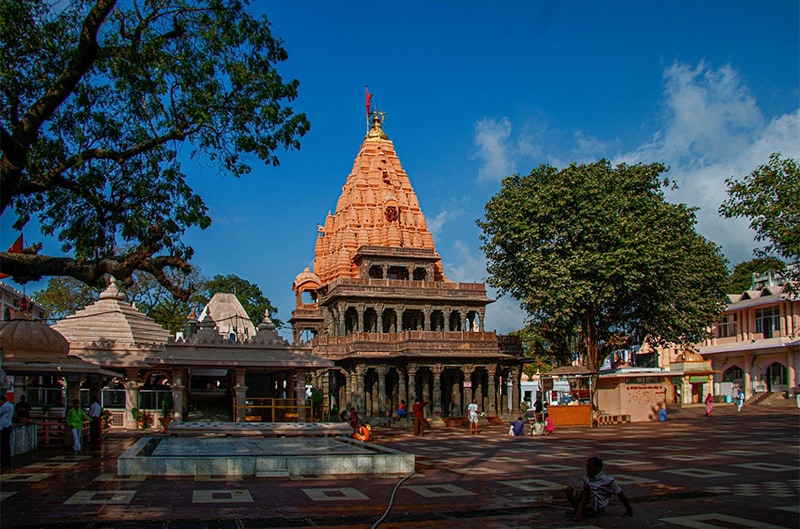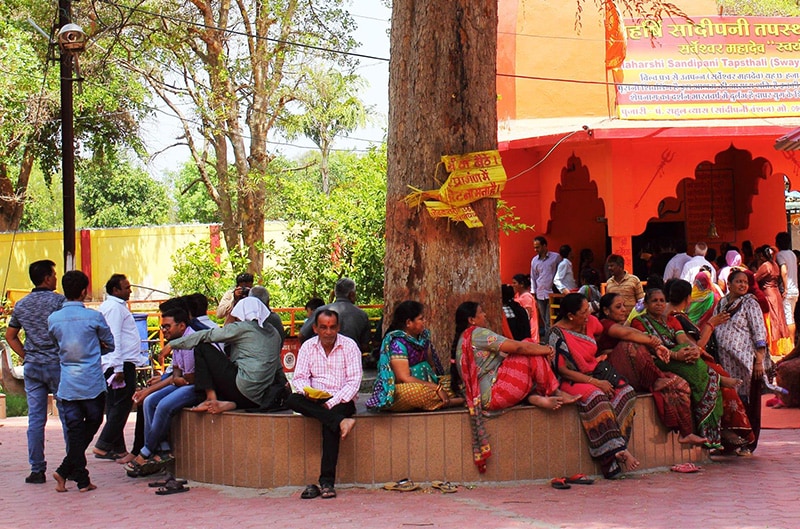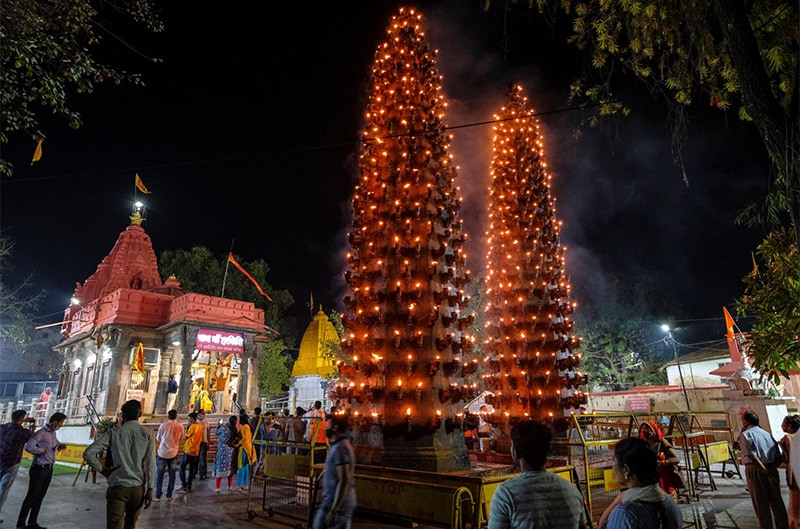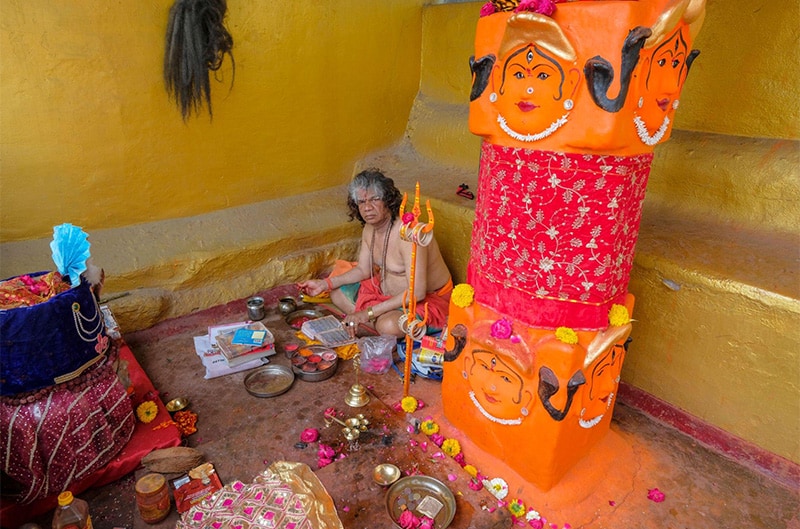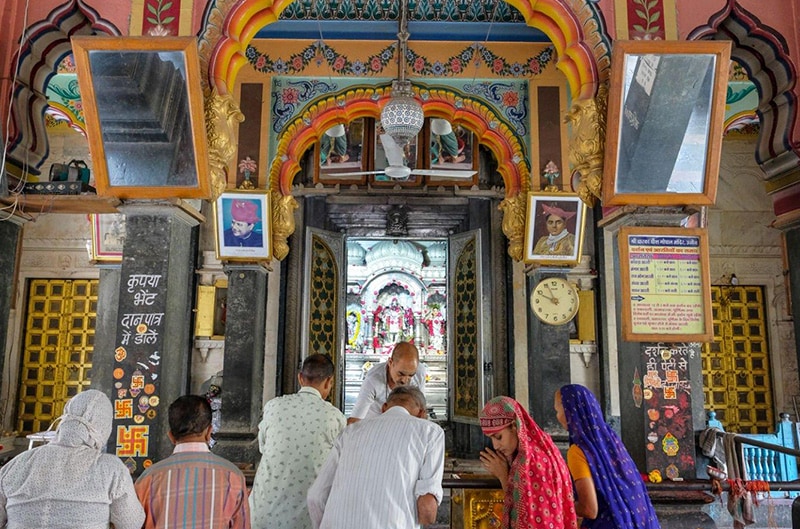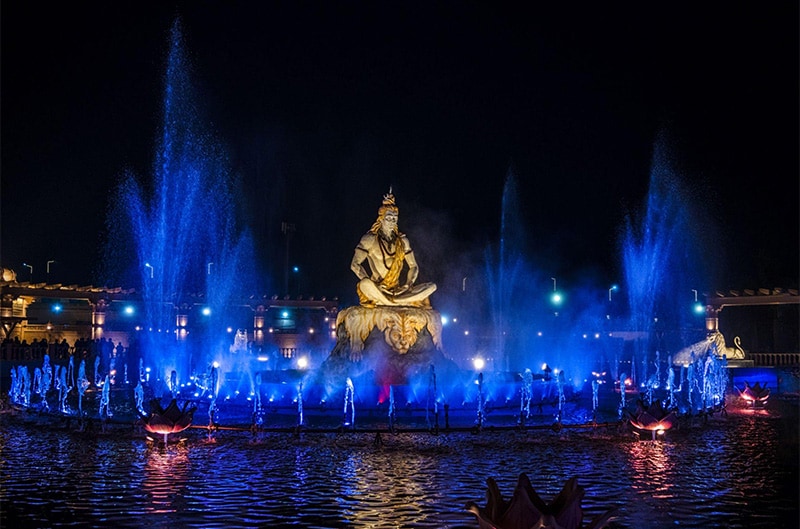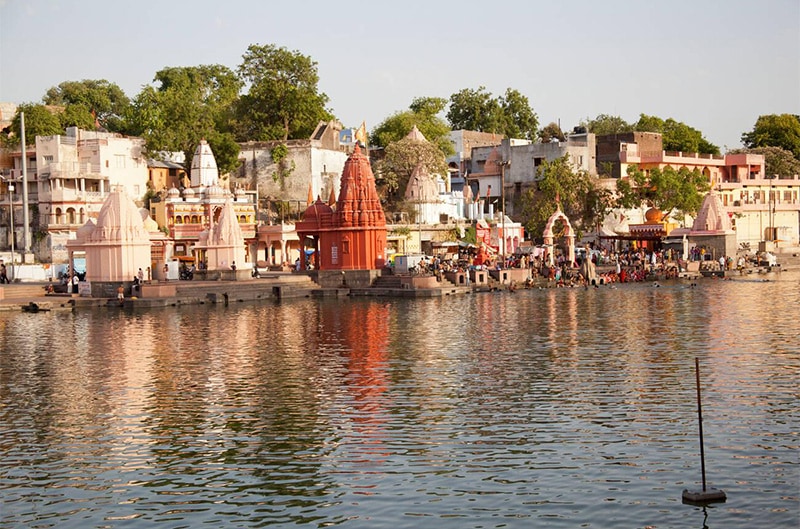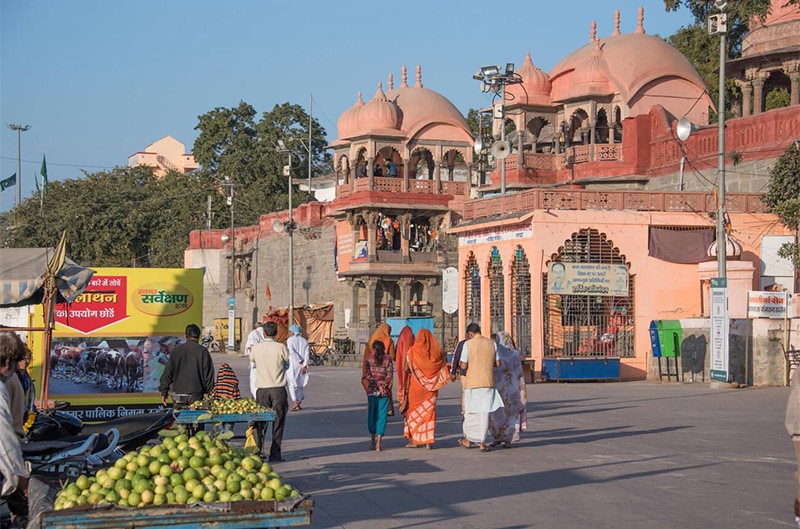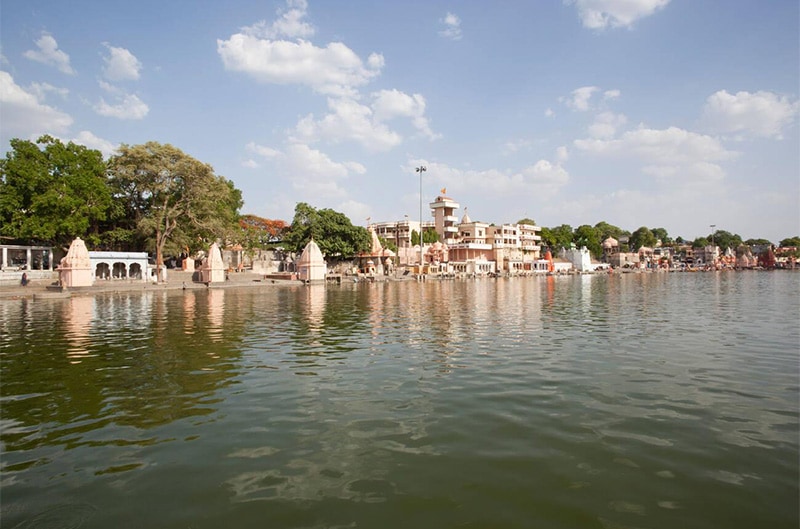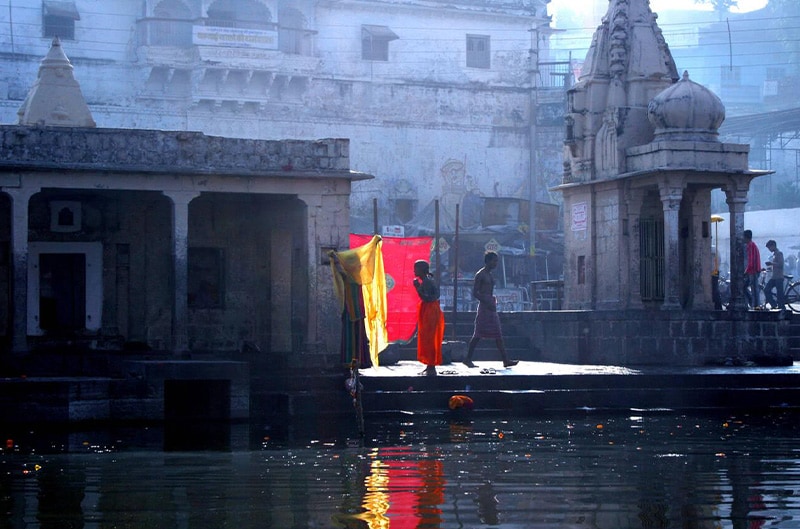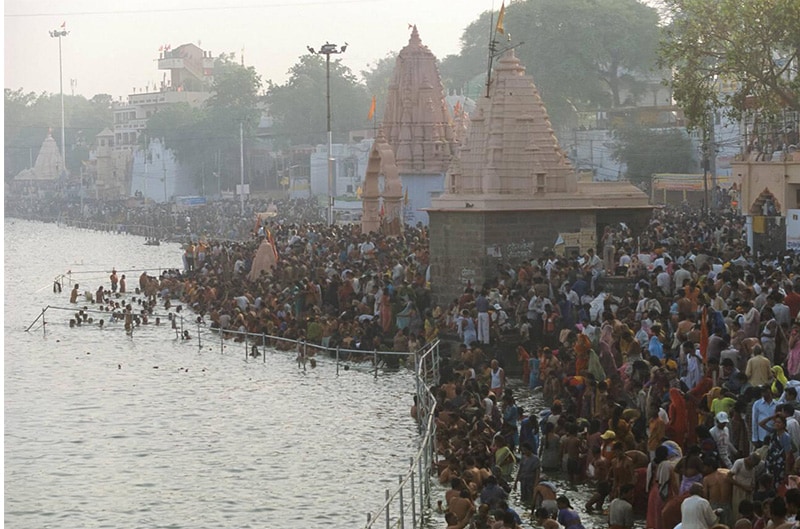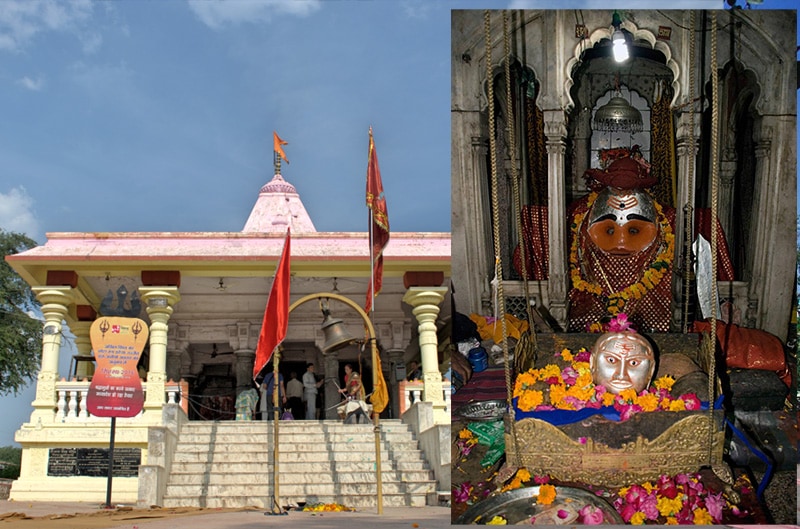Ujjain
Ujjain, a prominent religious city situated on the banks of the Kshipra River in India, is an ancient town steeped in history. During the reign of King Vikramaditya, it served as the capital of his kingdom and was often referred to as the “City of Kalidasa.” Ujjain is also home to the famous Mahakaleshwar Jyotirlinga, one of the twelve sacred shrines dedicated to Lord Shiva.
People from all over the country come to Mahakaleshwar Temple for special occasions like Sawan and Shivratri to seek blessings and have a darshan of the Lord Shiva.

Ujjain is located just 55 kilometers from the well-known city of Indore in the state of Madhya Pradesh, Ujjain is renowned for hosting the “Simhastha Kumbh Mela” every twelve years, a massive gathering of pilgrims and seekers. The city goes by various ancient names, such as “Avantika,” “Ujjayani,” and “Kanakshringa.”

Ujjain is a city of temples, and it abounds with numerous sacred sites and pilgrimage destinations. It is home to a diverse population of around 500,000 people. The ancient history of Ujjain is quite rich, with archaeological excavations in the fortified area yielding a significant amount of material dating back to the Iron Age.
Ujjain has remained a significant pilgrimage center for followers of various faiths, including Shaivism, Vaishnavism, and Shaktism.
Places to visit here:
Mahakaleshwar Temple: The revered Mahakaleshwar Jyotirlinga , It’s a sacred site holds a significant place among the twelve Jyotirlingas across the country, and it enjoys a rich history intertwined with various ancient scriptures. Prominent poets and scholars, including the great Tulsidas and many celebrated Sanskrit literary figures, have eloquently described the magnificence of the Mahakaleshwar Temple.
The Mahakaleshwar Temple has etched its presence deep into the hearts and minds of the people, with its legacy tracing back to time immemorial. Throughout history, Ujjain has been at the forefront of India’s spiritual tapestry, and Lord Mahakal, as the presiding deity of the city, holds a revered position.
The modern reconstruction of the temple took place during the reign of Ranoji Scindia, the Subedar of Malwa, under the guidance of Shri Ramchandra Baba Shenavi. The temple complex is structured in three distinct sections: the sanctum sanctorum houses Mahakal, Omkareshwar resides on the ground level, and Naganatheshwar crowns the pinnacle.
The historical importance of the Mahakaleshwar Temple is highlighted by the fact that it received royal decrees for worship from the likes of Maharaja Vikramaditya and King Bhoj. These sacred mandates have been preserved and continue to be revered by devotees.
Today, the temple is meticulously maintained and safeguarded under the vigilant care of the Mahakal Temple Committee.
Simhastha in Ujjain is a grand bathing festival celebrated at a twelve-year interval when Jupiter is in the Leo zodiac. Pilgrims participate in sacred rituals and take a purifying dip in the holy Shipra River. This auspicious event commences on the full moon day of the Chaitra month and continues with various significant bathing dates until the last bath on the full moon of Vaishakha month.
Shri Bade Ganesh Ji: Near the Shri Mahakaleshwar Temple, along the Har Siddhi Marg, stands the magnificent and artistically crafted idol of Lord Ganesh, known as Shri Bade Ganesh Ji. This awe-inspiring deity was created by the renowned scholar, the late Pandit Suryanarayan Vyasa, under the guidance of his father, the celebrated sage Pandit Narayan Ji Vyasa.
Within the temple premises, you’ll also find the resplendent statue of Panchmukhi Hanuman Ji, fashioned from seven sacred metals. The temple complex further houses the Navagraha Temple, the divine figures of Lord Krishna and Mother Yashoda, and a unique idol of Goddess Durga.
the idol of Goddess Durga is said to have a remarkable origin. It was brought to this sacred place from the illustrious Durga Bagh Palace in Devaas by Maharaja Panwar. This particular idol is said to be made of a rare black stone, possessing mystical and divine qualities that make it truly extraordinary.
Shri Bade Ganesh Temple, with its divine presences and vibrant atmosphere, stands as a testament to the rich spiritual heritage of Ujjain
Mangalnath Temple: In the ancient scriptures, it is mentioned that the city of Ujjayini is the birthplace of Mangal, the celestial embodiment of Mars. Individuals whose horoscopes are heavily influenced by the planet Mars often come to Ujjain to seek solace from their unfavorable planetary positions. Although there are numerous temples dedicated to Lord Mangal across the country, the significance of worship in Ujjain is unparalleled, given its association with Mangal’s birthplace. Later, it was reconstructed by the Scindia royal dynasty.
Due to the strong spiritual devotion and profound reverence for Lord Mangal at Mangalnath, devotees gather at the temple every Tuesday to perform their rituals.
HarSiddhi Temple: The HarSiddhi Temple is among the revered 51 Shakti Peeths, each holding a special place in Hindu literature. With a history dating back 2000 years, this temple’s significance is well-documented in ancient scriptures. What sets this temple apart is not only its antiquity but also the vibrant traditions it upholds.
During Navaratri, the temple bursts into life with festivities. Elaborate yagnas and rituals are conducted in honor of the Goddess. It is believed that any devotee who visits during this time will see their heartfelt wishes fulfilled.
Emperor Vikramaditya paid homage to HarSiddhi Devi, and she continues to be a cherished deity in the Vaishnavite tradition.
Kal Bhairav Temple: Ujjain is dedicated to the guardian deity Kal Bhairav. Situated on the banks of the Shipra River, it’s one of the most active temples in the city, where lot of devotees visit daily. Lord Kal Bhairav is often referred to as the sentinel of Ujjain. It’s believed that Mahadji Scindia, during the Maratha era, offered his turban to the deity as an act of devotion to seek victory and fulfillment of desires, symbolizing the power to vanquish Kal Bhairav’s adversaries.
In this world-renowned temple, Lord Bhairav is offered libations, a sacred tradition that has transcended time
Sandipani Ashram: At the Rishi Sandipani Ashram, located on Mangalnath Road, Lord Shri Krishna’s initiation ceremony took place 5,235 years ago. Under the guidance of Guru Sandipani, Shri Krishna was inscribed with three sacred mantras on a slate, a tradition that endures to this day.
During his time at Rishi Sandipani’s Ashram, Shri Krishna, along with his brother Balaram, received education for 64 days. In this span, he mastered 14 different branches of knowledge and acquired proficiency in 64 arts.
Even today, the tradition of Guru Purnima is celebrated with great pomp and grandeur at the Sandipani Ashram, commemorating this sacred period of education and spiritual growth.
Chintaman Ganesh: The Temple holds a significant place among the pilgrimage sites in Ujjain, situated approximately 6 kilometers away from Ujjain city in the village of Gram Javasya. Within the Chintaman Ganesh Temple, three divine forms of Lord Shri Ganesh are enshrined together: Chintamani Ganesh, Ichchhamani Ganesh, and Siddhivinayak Ganesh, each renowned for their distinct blessings.
The extraordinary and transcendental idols of Shri Chintaharan Ganesh dispel worries, Ichchhamani Ganesh fulfills desires, and Siddhivinayak bestows prosperity and success. It’s no wonder that devotees from far and wide are drawn to this sacred abode.
Right in front of the temple, you can find a well, where pilgrims come for a holy glimpse. The current structure of this temple, which was constructed around 250 years ago, is attributed to Maharani Ahilyabai Holkar. However, even before her time, the temple underwent restoration during the reign of the Parmar dynasty. The timeless foundations upon which this temple stands are reminiscent of the Parmar era, testifying to its enduring legacy
Ram Janardan Mandir: The temple houses the idols of Lord Rama, Lakshmana, and Sita, while the Janardan Temple features the divine form of Janardan-Vishnu. Both these temples are architectural marvels and a testament to the artistic finesse of their time. The construction of these temples was commissioned by King Jayasimha in the 17th century.
During the 18th century Maratha period, additional enhancements were made, including the integration of Char Dham (four pilgrimage sites) and a tank. On the walls of both temples, one can find exquisite depictions of Maratha art. In front of the Janardan Temple, near the tank, some ancient paintings are displayed, representing an essential aspect of mural art.
Beside the tank, there is an 11th-century image of Govardhanadhari Krishna. Inside the assembly hall and the interior of the Ram Temple, you can observe images of Vishnu from the 10th century and depictions of Brahma, Vishnu, and Maheshwara from the 12th century AD.
Navagraha Temple: Situated at Triveni Ghat on the Shipra River, this temple is located away from the old city of Ujjain. It is dedicated to the nine celestial bodies and attracts a significant crowd on Saturdays and during the new moon.
Shri Chaubis Khamba Mata Temple: The temple of Devi Mahamaya and Mahalaya in Ujjain, now known as the ’24 Pillar Goddess Temple,’ is an ancient and revered temple. Situated at the ancient entrance of Avantika city, which is Ujjain, these two goddesses are considered as protectors of the city. In this temple, besides the idol of King Vikramaditya, there are also statues of twenty-four goddesses. This Chabees Khamba Mata temple is located at a place referred to in mythological history as the gateway to the Mahakal forest.
Gopal Temple: This massive temple is located in the heart of the bustling market square. It was constructed in the 19th century by Queen Baijibai Shinde, the wife of Maharaja Daulat Rao Shinde. It stands as a splendid example of Maratha architecture. The sanctum sanctorum is crafted from marble, and the doors are adorned with silver.
Vedh Shala: This observatory, known as the ‘Jantar Mantar,’ is situated to the south in a place called Jaysinghpur, Ujjain. It was constructed by Maharaja Jai Singh of Jaipur in the year 1733 CE. During those days, he was appointed as the administrator of Malwa. India’s renowned astronomer and geographer believed that the Prime Meridian passed through Ujjain. Hence, the observatory here held special significance.
Sakshi Gopal: Within the precincts of the Mahakal Temple, there is a temple dedicated to Lord Krishna known as Sakshi Gopal. It is believed that Sakshi Gopal, as the name suggests, bears witness to the divine darshan of Lord Mahakal, and that is why He is known as Sakshi Gopal.
Ujjain, known as the city of temples, is home to numerous sacred places where you can purify your soul through divine worship. Spending some time here can provide you with profound insights and spiritual experiences, unveiling hidden truths and untapped wisdom.
Traveling to Ujjain:
Ujjain is conveniently located near Indore, making it accessible by flights from most major cities.
you can reach Ujjain by train from various significant cities, ensuring a comfortable journey.
Bus and taxi services are also readily available, with direct routes from Indore for those seeking a seamless trip to Ujjain for pilgrimage and sightseeing.
So, whether you prefer to travel by air, train, or road, Ujjain is accessible from various parts of Madhya Pradesh and nearby cities. Enjoy your trip!


